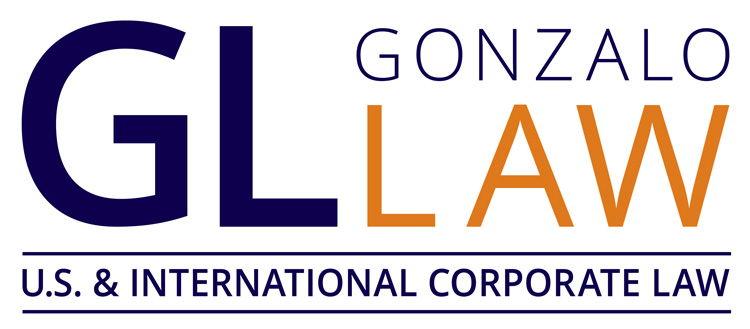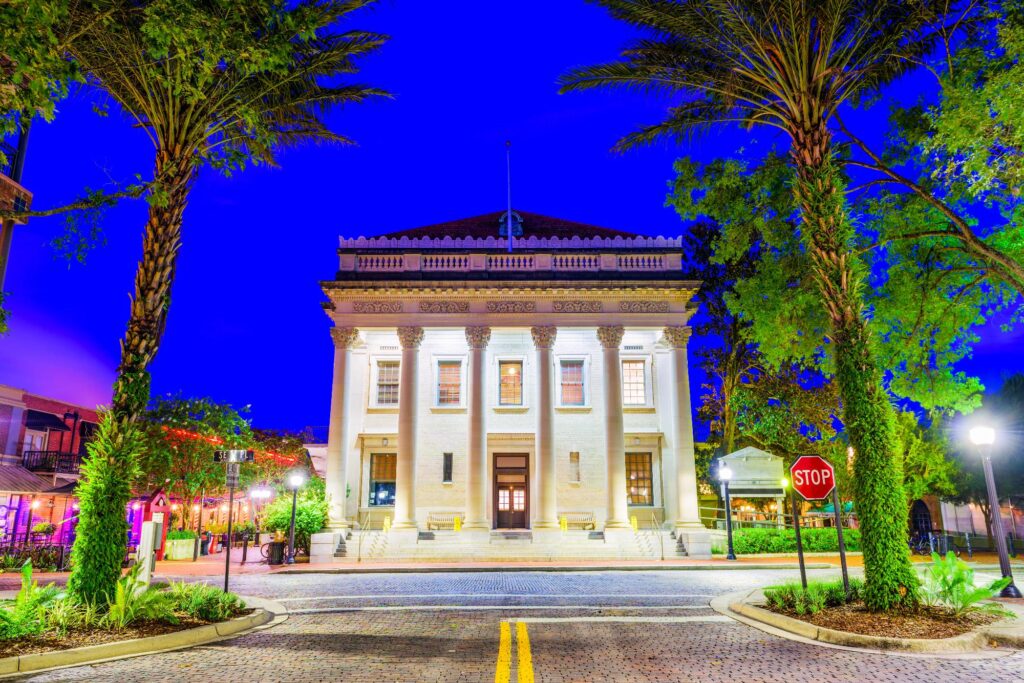By Nouvelle L. Gonzalo, Esq. and Aashna Arora

In today’s competitive landscape, universities and research centers play an increasingly vital role in technological and intellectual advancements. Even if these institutions are not amid a merger or acquisition, it is important that they safeguard their intellectual property portfolios for the strength of the overall organization. That being said, these institutions face challenges in safeguarding intellectual property (IP), which includes innovations in healthcare, education, technology, and more.[1] Effective IP protection strategies ensure that discoveries and inventions are secured, benefiting both the institution and the wider community.[2] This white paper explores essential IP protections relevant to educational institutions—trademarks, copyrights, trade secrets, non-disclosure agreements (NDAs), and non-compete agreements (NCAs). Using examples from prominent institutions such as the Cleveland Clinic, University Hospitals (UH) Health System, Case Western Reserve University, Cleveland State University, and The Ohio State University, this paper provides actionable strategies for safeguarding IP, ensuring institutions can foster innovation while maintaining competitive advantages.
Introduction
Intellectual property (IP) represents a key asset for universities, hospitals, and research institutions. Inventions, discoveries, and original works generated by faculty, students, and staff contribute to advancing knowledge and often have significant commercial potential. Without adequate protection, IP is vulnerable to misappropriation, which can dilute an institution’s competitive edge and limit future innovation.[3] Educational institutions have unique challenges regarding IP protection due to their collaborative environments, often involving external partnerships and multi-disciplinary teams.[4] To address these issues, this paper examines strategies to protect IP in various forms, offering insights into real-world practices at institutions in Ohio which have a national and global reach.
IP Rights in the Academic and Research Environment
Trademarks
Trademarks are essential for protecting the unique identifiers of an institution’s brand—this refers to it’s logos, names, slogans, and other brand elements.[5] They serve to distinguish the institution’s identity and prevent unauthorized use that could confuse or mislead the public.[6] For universities, trademarks are crucial for protecting reputation and are often leveraged in fundraising, recruitment, and partnerships.[7]
A notable example is Ohio State University’s attempt to trademark the word “THE” on apparel to control the branding of its famous phrase “THE Ohio State University” in 2019.[8] Generally, the word “the” cannot usually be trademarked.[9] This is because it is a generic term and trademark laws prohibit the registration of generic terms because they do not distinguish the source of the product.[10] However, the USPTO allowed Ohio State University to trademark the word “THE” because the university was able to show that the mark was distinctive.[11] Through significant use of the word and through marketing, Ohio State University (OSU) was able to prove that “the” had become associated with its brand.[12]
This trademark was intended to reinforce OSU’s unique identity and prevent unauthorized commercial use.[13] While controversial, the trademark demonstrates the importance of protecting and distinguishing the elements of an institution’s brand, particularly when that branding contributes significantly to an institution’s public identity and fundraising capabilities. Institutions can register unique identifiers, and must then monitor their IP portfolios to ensure that the brand stays consistent and that there is no infringement.
Copyrights
Next, we turn our attention to copyright. Copyrights protect original works of authorship, including research papers, educational materials, software, and media.[14] For universities, copyrights are invaluable for securing control over academic publications and software developed by faculty or students.[15]
Case Study: Cleveland State University and Copyright Policies
Cleveland State University (CSU) has established copyright policies to ensure that course content, software, and digital materials created by faculty and students are protected. For example, CSU maintains copyright ownership over materials produced as part of faculty contracts, ensuring that professors who leave cannot reuse or alter materials in a manner that would undermine CSU’s interests.[16] The policy enables the university to license or reuse educational content efficiently, providing a revenue source and controlling the distribution of proprietary materials.[17]

Trade Secrets
Trade secrets protect confidential information that provide a competitive edge, such as formulas, processes, or research methods that are not publicly disclosed.[19] The institution must document that it takes active affirmative steps to maintain the secrecy of the information in order for the information to be considered a trade secret. Institutions involved in ongoing or cutting-edge research, particularly in areas like biomedicine, engineering, and data science, rely on trade secrets to maintain proprietary advantages.[20]
Case Study: Cleveland Clinic’s Proprietary Research
The Cleveland Clinic is known for its innovations in healthcare. It closely protects its proprietary research methods and findings as trade secrets.[21] In medical research, especially early-stage projects where patents have not yet been filed, maintaining secrecy is crucial. For instance, Cleveland Clinic safeguards its research methods and preliminary findings by limiting access to select research personnel and utilizing secure data management practices to affirmatively protect its information.[22] This approach ensures that competitors cannot access or replicate their innovations prematurely.

IP Protection Mechanisms and Agreements: Role and Importance of Non-Disclosure Agreements (NDAs)
NDAs are essential in protecting confidential information when institutions partner with external organizations or involve students and faculty in sensitive research.[24] NDAs prevent the disclosure of proprietary information and foster an environment where open collaboration can occur without risking IP exposure.
Case Study: The Ohio State University’s Use of NDAs in Corporate Partnerships
The Ohio State University (OSU) frequently employs NDAs when collaborating with corporations on technology transfer projects, which involve sharing proprietary information for research and development. These NDAs specify that the corporate partner cannot use or share OSU’s proprietary knowledge outside the project scope, safeguarding OSU’s interests. The use of NDAs in these partnerships ensures that OSU’s innovations remain secure while benefiting from corporate funding and technological resources. Below is some sample language that is common to NDAs in general.

Non-Compete Agreements (NCAs) Purpose and Application of NCAs
Non-compete agreements prevent individuals from working for competitors or starting competing ventures within a specified timeframe after leaving an institution. While NCAs are controversial in academia, they play a role in preventing the immediate transfer of proprietary knowledge to competing entities through the transfer of employees.[26] This law is in flux and has come under fire for a nationwide ban on non-competes from the Federal Trade Commission (FTC). The remain enforceable in many jurisdictions, yet this can change.
Case Study: Cleveland Clinic and Non-Compete Clauses for Research Personnel
The Cleveland Clinic uses non-compete clauses for key research personnel involved in proprietary projects, ensuring that they cannot join competitor institutions immediately after departure.[27] This policy aims to protect Cleveland Clinic’s ongoing research from direct competition.[28] For instance, researchers working on cutting-edge medical devices are required to sign NCAs that prevent them from engaging in similar projects at other institutions for a certain period.[29] This approach ensures that Cleveland Clinic retains its competitive edge in proprietary research.

Practical IP Strategies for Institutions: Implementing an IP Management System
An IP management system tracks IP assets, licensing agreements, renewals, and enforcement actions, streamlining IP administration.[30]
Case Study: The Ohio State University’s IP Management System
The Ohio State University implemented a centralized IP management system to monitor its patents, trademarks, and licensing activities.[31] This system automates IP renewals, tracks compliance, and provides detailed reports on active and expired IP.[32] Such a system is crucial for OSU, where complex research initiatives result in a broad IP portfolio. This setup enables OSU to maintain comprehensive oversight of its IP assets, ensuring that no rights lapse and maximize its licensing revenue.[33] This type of system is valuable for institutions with broad IP portfolios.

Compliance and Legal Considerations
Educational institutions must stay compliant with U.S. IP laws governing patents, trademarks, and copyrights.[34] Compliance is crucial to prevent IP claims from being invalidated due to lack of legal oversights.[35]
Case Studies of Compliance Measures at Cleveland State University
Cleveland State University (CSU) has taken proactive steps to ensure IP compliance by implementing training programs for faculty and researchers on IP law basics.[36] These programs emphasize adherence to copyright regulations, particularly in digital content creation. CSU’s approach underscores the need for ongoing education to reduce legal risks and uphold copyright protections.
Conclusion
By following the strategies illustrated and analyzed here, universities and research centers can better safeguard their intellectual property and ensure that valuable innovations remain within the institution’s control. Institutions must adapt their IP practices continuously, reflecting changes in IP law and the evolving research landscape, ultimately strengthening their roles as leaders in innovation.
About the Authors

Nouvelle L. Gonzalo, Esq.
Nouvelle L. Gonzalo, Esq. is a magna cum laude graduate of New York University, an honors graduate of the Ohio State University College of Law, and was a visiting scholar at St. Anne’s College at Oxford University in Oxford, England. Atty. Gonzalo is a U.S. and international corporate lawyer who works with companies across the globe. She is the managing attorney of Gonzalo Law PLLC, a U.S. and international corporate law firm with offices in Florida and Ohio and New York. Later, additional offices will include London, and Singapore. In addition to the active practice of law, she served as adjunct faculty of international corporate law at the University of Florida, Levin College of Law for three years. She is recognized with the top 2.5% of Florida lawyers as a rising star by the national organization, Super Lawyers from 2019- 2024. Her practice areas include: U.S. corporate contracts and acquisitions, non-profit law, healthcare corporate law, international corporate law, and intellectual property law. Atty. Gonzalo resides in Gainesville, Florida and has two children. She can be reached at [email protected] or via phone at 855-466-9256.

Aashna Arora
Aashna Arora is a dynamic and driven Juris Doctor and Master of Business Administration candidate at Case Western Reserve University School of Law and Weatherhead School of Management in Cleveland, Ohio. She will graduate in May of 2026. As a Norman A. Sugarman Business Law Scholar, Aashna is building a robust foundation in corporate law and business management, combining her legal education with strategic business insights.
[1] See Pa. State Univ. v. Derry Twp. Sch. Dist., 45 Pa. D. & C.4th 51 (C.P. 2000).
[2] See Kaloyeros v. State of N.Y., 154 N.Y.S.3d 343 (Ct. Cl. 2021).
[3] Bob Ertl, Safeguarding Intellectual Property When Collaborating With External Parties, Kiteworks (Aug. 15, 2023), https://www.kiteworks.com/third-party-risk/safeguard-your-intellectual-property/.
[4] See Daneshvar v. Kipke, 266 F. Supp. 3d 1031 (E.D. Mich. 2017).
[5] Deborah Sweeney, Business Name vs Trademark, My Corp., https://www.mycorporation.com/learningcenter/business-name-vs-trademark.jsp (last visited Nov. 20, 2024).
[6] Andrew McClain Adams, “The” Ohio State University and the Trademark Protection of Cultural Identity, NC Bar Blog (Jan. 9, 2023), https://www.ncbarblog.com/the-ohio-state-university-and-the-trademark-protectionofculturalidentity/#:~:text=Trademarks%2C%20rather%20than%20protecting%20creative%20works%2C%20protect%20brands%20and%20consumers%20against%20unfair%20competition.&text=Because%20the%20crux%20of%20trademark%20law%20is,the%20merchandise%20in%20question%20is%20coming%20from.
[7] Gerlich v. Leath, 152 F. Supp. 3d 1152 (S.D. Iowa 2016).
[8] Daniel Victor, Ohio State University Trademarks ‘The’, The N.Y. Times (June 23, 2024), https://www.nytimes.com/2022/06/23/us/the-ohio-state-university.html.
[9] Door Sys. v. Pro-Line Door Sys., 83 F.3d 169 (7th Cir. 1996).
[10] Id.
[11] Perry Gattengo, Blinded by The: A Deep Dive Into the Recent Ohio State University Trademark Application, How Brands Are Built (Aug. 22, 2019), https://howbrandsarebuilt.com/blinded-by-the-a-deep-dive-into-ohio-state-universitys-latest-trademark-application/.
[12] Id.
[13] Id.
[14] TMTV, Corp. v. Mass Prods., Inc., 345 F. Supp. 2d 196 (D.P.R. 2004).
[15] Weinstein v. Univ. of Ill., 811 F.2d 1091 (7th Cir. 1987).
[16] See generally Regents of the Univ. of Cal. v. Aisen, 143 F. Supp. 3d 1055 (S.D. Cal. 2015).
[17] See generally Id.
[18] Module 3: Copyright & Fair Use, Iowa OER, https://iowaoer.com/module-3-copyright-fair-use/ (last visited Jan. 21, 2025).
[19] Trade Secrets, WIPO, https://www.wipo.int/en/web/trade-secrets (last visited Dec. 30, 2024).
[20] La Calhene, Inc. v. Spolyar, 938 F. Supp. 523 (W.D. Wis. 1996).
[21] Hance v. Cleveland Clinic, 172 N.E.3d 478 (Ohio Ct. App. 2021).
[22] See State ex rel. Physicians Comm. for Responsible Med. v. Bd. of Trs. of Ohio State Univ., 843 N.E.2d 174 (Ohio 2006).
[22] Non-Disclosure Agreement FAQs, Univ. of Texas at Arlington, https://resources.uta.edu/research/agreement-management/common-faqs/nda-faq.php (last visited Dec. 30, 2024).
[23] Defense-in-Depth, Imperva, https://www.imperva.com/learn/application-security/defense-in-depth/ (last visited Jan. 21, 2025).
[24] Non-Disclosure Agreement FAQs, Univ. of Texas at Arlington, https://resources.uta.edu/research/agreement-management/common-faqs/nda-faq.php (last visited Dec. 30, 2024).
[25] Non-Disclosure Agreement (NDA) Template – Sample, NonSisclosureAgreement.com, https://nondisclosureagreement.com (last visited Jan. 21, 2025).
[26] See Litig. Mgmt. v. Bourgeois, 2011-Ohio-2794 (Ct. App.).
[27] See Defiance Hosp., Inc. v. Fauster-Cameron, Inc., 344 F. Supp. 2d 1097 (N.D. Ohio 2004).
[28] See Id.
[29] See Medtronic, Inc. v. Advanced Bionics Corp., 630 N.W.2d 438 (Minn. Ct. App. 2001).
[30] Kukundawke Samali, Intellectual Property Management: A Comprehensive Guide for Protecting Your Innovations, LinkedIn (Jan. 24, 2024), https://www.linkedin.com/pulse/intellectual-property-management-comprehensive-guide-your-samali-b7obf/.
[31] Patents and Copyrights, Ohio State Univ., https://research.osu.edu/award-management/patents-and-copyrights (last visited Dec. 30, 2024).
[32] See Id.
[33] See Id.
[34] Matt Warenzak, Universities and Intellectual Property Law, Smith Gambrell Russell, https://www.sgrlaw.com/ttl-articles/universities-intellectual-property-law/ (last visited Dec. 30, 2024).
[35] Id.
[36] See Commercialization Process, https://www.csuohio.edu/technology-transfer/commercialization-process (last visited Dec. 30, 2024).
PRACTICE AREA CHAIR:
Regions Served:






